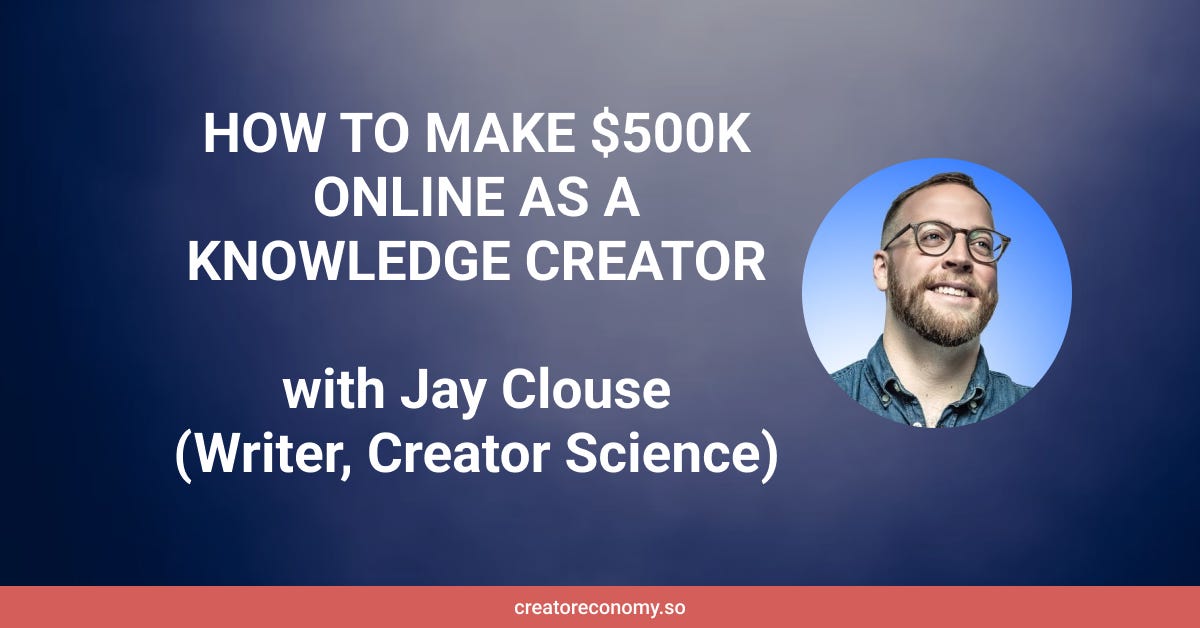Jay Clouse (Creator Science): How to Make $500K Online as a Knowledge Creator
Jay's advice for new creators and the pros and cons of creator monetization channels
Dear subscribers,
In my last post, I wrote about how you can build a thriving business by turning your knowledge into income online. Today, I want to share an interview with Jay Clouse, a creator who’s on track to make $500K this year from his online business.
Jay is the founder of Creator Science, a newsletter, podcast, and community dedicated to helping creators succeed. In our interview below, we cover:
How Jay got started
His PARTS model for new creators
The pros and cons of creator monetization channels
How Jay got started as a creator
Welcome Jay! Can you describe how you got started?
I was a PM at a healthcare company before becoming a creator. In 2017, that company changed its strategy and canceled my product. So I decided that it was time as any to try something new.
I didn’t know what I wanted to do, and for awhile I made a living doing freelance web design and copywriting. I also started a newsletter that I wrote everyday and a community for other founders and creators.
Those efforts eventually led me to start my company, Creator Science.
What’s the best and worst thing about being a creator?
It’s the same answer for both - I have full control of my time.
The best part of being a creator is that I get to decide what I spend my time on. The worst part is that I have full responsibility for the outcome.
Over the years, I expanded from a newsletter to multiple creator products:
Email: I started this to have a direct channel to my audience.
Podcast: I started this because I enjoyed learning from other creators.
Social: Email and podcasts are inherently hard to grow without a social presence.
YouTube: I started this to publish all the video recordings from my podcast.
Community: I wanted to build a community for creators to learn from each other.
As you can imagine, building all these things at once can be exhausting. It’s challenging to make a decision on which part of the business to spend time on everyday.
How to start from scratch
If you had to start from scratch again - what steps would you take?
Great question. Here’s my PARTS model for becoming a professional creator:





